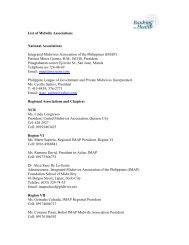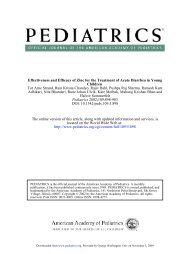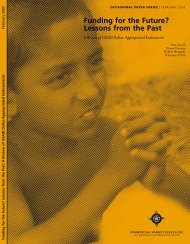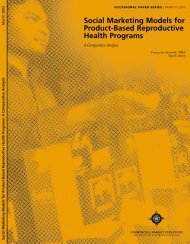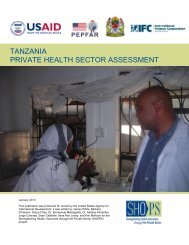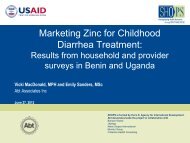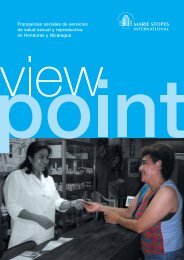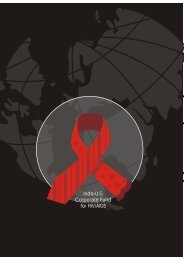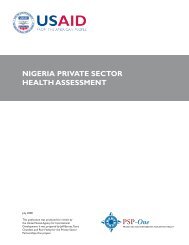identifying at risk populations and hiv/aids referral ... - (SHOPS) project
identifying at risk populations and hiv/aids referral ... - (SHOPS) project
identifying at risk populations and hiv/aids referral ... - (SHOPS) project
- No tags were found...
You also want an ePaper? Increase the reach of your titles
YUMPU automatically turns print PDFs into web optimized ePapers that Google loves.
Day laborers/construction workers <strong>and</strong> factory employees<br />
Shashamene is home for about 3,000 day laborers/unskilled construction workers, close to 10,000<br />
school youth, <strong>and</strong> 3,000 petty traders/informal traders. The number of out-of-school youth, petty<br />
traders, <strong>and</strong> day laborers is among the highest in the corridor. This huge popul<strong>at</strong>ion is disorganized <strong>and</strong><br />
very difficult to target, so little <strong>at</strong>tention is given them. Most of these individuals are young <strong>and</strong> sexually<br />
active <strong>and</strong> visit FSW.<br />
Health profile<br />
Key informants report th<strong>at</strong> STIs, HIV/AIDS, diarrheal disease, <strong>and</strong> TB are the most common health<br />
problems in Shashamene. The town has one government hospital <strong>and</strong> one health center. These facilities<br />
provide all HIV/AIDS services. Shashamene has 18 priv<strong>at</strong>e health facilities including one priv<strong>at</strong>e general<br />
hospital. However, none of these facilities provides HIV/AIDS services except for STI management<br />
(provided in all facilities) <strong>and</strong> TB diagnosis <strong>and</strong> OI management (in some facilities). There are also nine<br />
pharmacies <strong>and</strong> four drug venders in the town.<br />
There are 11 NGOs directly working in Shashamene town in areas of HIV/AIDS. Most of them target<br />
PLHA <strong>and</strong> OVC by providing HBC, OVC, <strong>and</strong> IGA services. All of them have IEC/BCC interventions in<br />
their programs. However, none of them provides HCT services nor targets popul<strong>at</strong>ions <strong>at</strong> higher <strong>risk</strong> of<br />
HIV/AIDS, like the huge popul<strong>at</strong>ion of out-of-school youth, in-school youth, day laborers, informal<br />
traders, <strong>and</strong> transport<strong>at</strong>ion workers.<br />
TABLE 75. NUMBER OF PUBLIC AND PRIVATE FACILITIES<br />
Public facilities<br />
Number<br />
Hospital 1<br />
Primary health center 1<br />
Urban health post ---<br />
Clinic ---<br />
Total 1<br />
Priv<strong>at</strong>e facilities<br />
Hospital 1<br />
Higher clinic 4<br />
Medium clinic 3<br />
Lower clinic 10<br />
Total 18<br />
35



